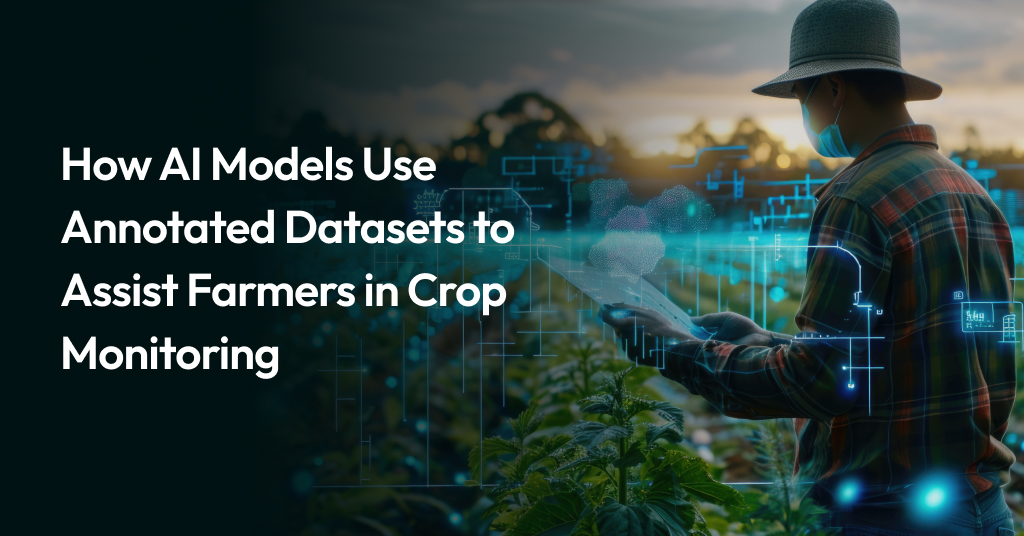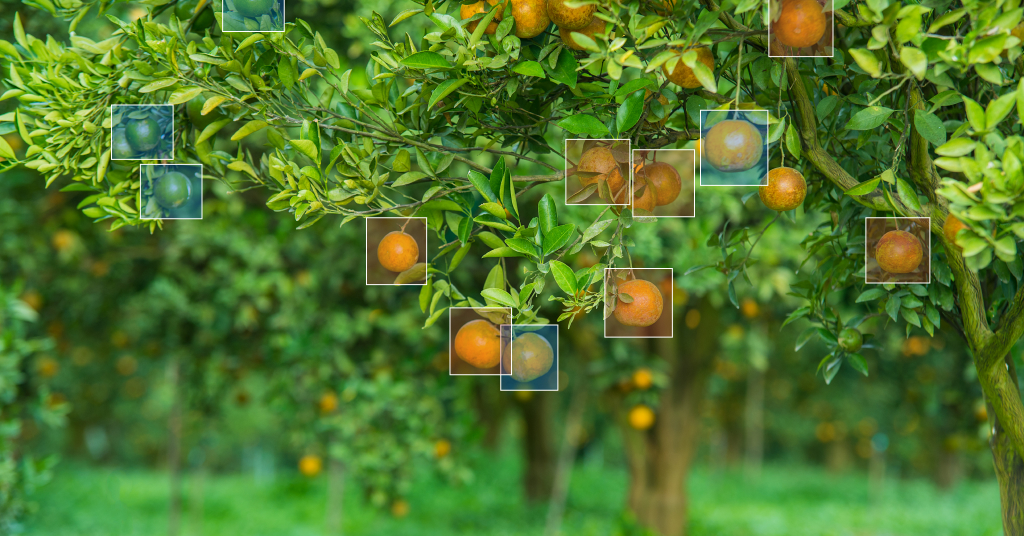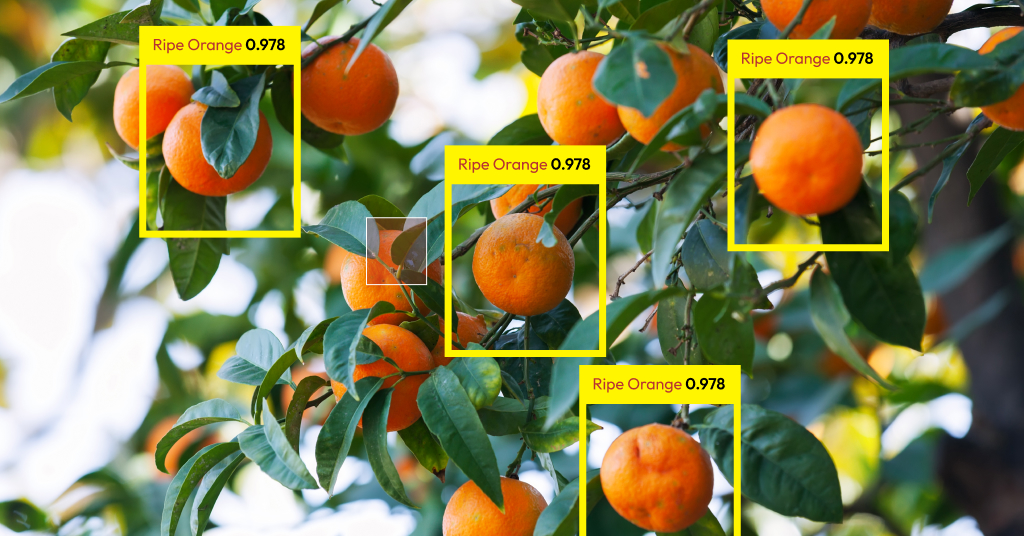
Farmers have long relied on their expertise to evaluate yields, detect diseases, and predict natural disasters. However, with advancements in artificial intelligence (AI), they can now leverage technology to do these tasks more efficiently and accurately. By using AI models, farmers can gain valuable insights into the health and productivity of their crops, allowing them to make more informed decisions and optimize their farming practices.
These AI models are trained on large datasets annotated by experts, providing labels of healthy crops, diseased plants, ideal yields, and other key indicators. As the models process more and more annotated data, they learn to recognize patterns and make predictions with increasing precision, revolutionizing the way we approach agriculture. Let’s delve deeper into how data annotation empowers AI models to become a valuable ally for farmers in crop monitoring.
Table of content
The Role of Data Annotation in Crop Monitoring
- Enhancing Crop Detection and Classification
Meticulous labeling of drone footage or pictures by annotators provides essential data for AI algorithms to learn and recognize the distinct features of various crops. This process involves identifying different crop types, highlighting their unique characteristics, and distinguishing them from unwanted elements like weeds and pests.
By learning these details, AI models can assist farmers in taking timely actions, such as removing weeds before they spread or providing precise identification of different crops. This also allows farmers to implement tailored care practices for each crop type, optimizing their growth conditions and improving overall yield. Consequently, the enhanced accuracy of crop detection and classification through data annotation leads to more efficient and effective crop monitoring practices. This not only boosts productivity but also supports sustainable farming by minimizing resource wastage and maximizing the quality and quantity of agricultural produce.
- Automating Disease and Pest Identification
AI models accurately identify pests and diseases affecting crops’ health through high-quality training datasets. By annotating images or videos with labels indicating the presence or absence of pests and diseases, annotators enable AI algorithms to learn patterns and characteristics associated with these threats. This annotated data forms the basis for training robust AI models capable of accurately detecting and diagnosing crop diseases and pest infestations. This ultimately enables farmers to take timely preventive measures.
- Predicting Crop Health and Yield
AI models can analyze labeled data to predict the health status of crops and estimate potential yields. Annotated datasets provide crucial information about various parameters, such as plant growth stages, nutrient levels, and environmental factors, which are essential for training AI algorithms. By leveraging this training data for agriculture, AI models can identify patterns and correlations to forecast crop health trajectories and predict yields, empowering farmers to make informed decisions regarding crop management and harvesting.
- Optimizing Resource Management
Data annotation facilitates targeted resource allocation in agriculture by providing AI models with labeled information about crop conditions and environmental factors. By annotating data related to soil quality, moisture levels, and crop health, annotators enable AI algorithms to optimize resource usage such as water, fertilizers, and pesticides. This annotated dataset empowers AI models to provide invaluable insights and recommendations to farmers. Armed with this information, farmers can precisely allocate resources, thereby minimizing wastage and maximizing the efficiency of farming operations.
- Enabling Field Surveillance and Threat Detection
Data annotation experts can label field imagery like drone footage or satellite pictures with specific threats like trespassing animals, signs of crop theft, or malfunctioning irrigation equipment. This labeled data teaches AI models to recognize these anomalies in future monitoring data. Once trained, AI models can continuously analyze field data streams, flagging potential threats in real-time. This allows farmers to receive immediate alerts for issues like animal intrusion or water stress, enabling a quicker response and potentially minimizing damage. Moreover, armed with this information, farmers can strategically allocate manpower for targeted field checks instead of relying solely on routine patrols. This allows for a more focused and efficient approach to field security and threat mitigation.
Types of Data Annotation Techniques Used in Crop Monitoring

- Bounding Boxes: This technique involves drawing rectangular boxes around objects of interest within an image. In crop monitoring, bounding boxes can be used to identify and count plants, detect diseased areas, and monitor the growth of crops over time. This method is relatively simple and computationally efficient, making it suitable for large-scale applications.
- Semantic Segmentation: Unlike bounding boxes, semantic segmentation provides pixel-level classification of images. Each pixel in the image is assigned a class label, such as soil, plant, weed, or water. This technique offers a more detailed and accurate representation of the field, which is crucial for tasks like weed detection, soil health assessment, and crop yield estimation. Semantic segmentation helps in creating detailed maps of crop health and can guide targeted interventions.
- Keypoint Annotation: This involves marking specific points of interest within an image, such as the centers of flowers, leaf tips, or fruit positions. Keypoint annotation is particularly useful in studies of plant morphology, growth patterns, and phenotyping. It allows researchers to track developmental stages and detect anomalies at a granular level.
- Polygon Annotation: This technique involves drawing polygons around objects of interest to capture their exact shapes and sizes. Polygon annotation is more precise than bounding boxes, making it ideal for irregularly shaped objects like leaves, fruits, and specific plant parts. This method is useful for detailed crop health assessments and identifying areas affected by diseases or pests.
- Instance Segmentation: A combination of object detection and semantic segmentation, instance segmentation assigns a unique identifier to each object instance in an image, along with pixel-level classification. This technique is particularly useful in distinguishing overlapping plants and assessing individual plant health, growth rates, and yield estimates.
- Landmark Annotation: Similar to keypoint annotation, landmark annotation involves marking specific locations within an image but typically focuses on identifying multiple landmarks to form a structure. For example, annotating the shape of a leaf or the structure of a plant canopy. This method helps in detailed phenotypic analysis and understanding of plant structure and function.
- Line Annotation: This technique is used to draw lines along specific features within an image, such as the edges of leaves, stems, or rows of crops. Line annotation is useful for monitoring plant architecture and growth patterns and detecting structural changes due to environmental factors or stress conditions.
- 3D Cuboid Annotation: This advanced technique involves drawing 3D cuboids around objects to capture their volume and spatial orientation. In crop monitoring, 3D cuboid annotation can be used for tasks such as estimating the biomass of plants, evaluating fruit volumes, and analyzing plant canopy structures in three dimensions.
- Circle and Ellipse Annotation: Used for annotating circular or elliptical objects, such as fruits or specific flower parts, this technique provides a more accurate representation of such shapes compared to bounding boxes. It helps in precise measurement and monitoring of the size and development of these entities.
Challenges in Data Annotation for Crop Monitoring
Data annotation for crop monitoring presents several challenges related to the quality of training data for agriculture that must be addressed to ensure the effectiveness of agricultural automation. Some of these challenges include:
- Issues Related to the Accuracy and Consistency of Annotations
Ensuring that annotations are both accurate and consistent is critical for reliable crop monitoring. Variability in human annotations can lead to errors that affect the performance of models. This inconsistency can be due to differences in annotators’ expertise, environmental conditions at the time of data capture, or the inherent complexity of agricultural images.
- Managing Large Datasets and the Need for Specialized Annotation Tools
The scale of data in crop monitoring can be immense, especially when using high-resolution satellite imagery or extensive drone footage. Managing and processing these large datasets require robust and specialized annotation tools that can handle high volumes of data efficiently. Additionally, these tools need to support various annotation techniques and integrate seamlessly with machine learning workflows to produce high-quality training data for agriculture.
- The Expertise Required for Accurately Annotating Agricultural Data
Annotating agricultural data often requires specialized knowledge about plant species, growth stages, and potential diseases. This expertise is crucial to ensure that labelings are meaningful and useful for agricultural automation systems. However, finding and training annotators with the necessary expertise can be challenging and time-consuming.
- Data Diversity and Generalizability
Agricultural data varies widely due to differences in crop types, climatic conditions, and farming practices. Ensuring that annotated datasets are diverse enough to capture this variability is crucial for developing robust machine-learning models. However, creating such diverse datasets is challenging and requires extensive effort in data collection and annotation.
- Temporal Dynamics
Crop monitoring often involves tracking changes over time, which adds another layer of complexity to data annotation. Annotators need to be aware of the temporal aspects of plant growth, seasonal variations, and the progression of diseases. Accurately capturing these dynamics in annotations is essential for developing models that can predict future conditions and support decision-making in agriculture.
- Scalability of Annotation Processes
As the volume of data grows, the annotation process must be scalable to keep up with it. Automating parts of the annotation process using pre-trained models and active learning techniques can help, but these methods also need to be carefully managed to maintain high-quality annotations.
Outsourcing: The Key to Fulfilling Large-Scale Data Annotation Needs

The future of crop monitoring is set to be revolutionized by advancements in AI. As the agricultural sector increasingly relies on precise and real-time data to enhance crop yields and sustainability, the role of annotated datasets becomes even more critical. However, the complexity and volume of data required for effective AI-driven crop monitoring surpass the capabilities of in-house teams. Thus, specialized assistance from experienced data labeling service providers is essential.
With readily available annotated data, AI models can be trained efficiently, enabling stakeholders to harness the benefits of AI-driven insights in a timely manner. Furthermore, it can also facilitate the development of highly specialized AI models tailored to specific crops, regions, and environmental conditions.
Moreover, as AI technologies evolve, the demand for sophisticated, large-scale annotated datasets will grow. Data annotation outsourcing meets this growing demand and accelerates the adoption of cutting-edge AI solutions, driving the future of sustainable and efficient farming practices.
On a Concluding Note
This synergy between data annotation and AI in agriculture holds the key to creating strong and sustainable agricultural practices, ensuring that farming systems remain responsive and effective in the face of evolving challenges and opportunities.
